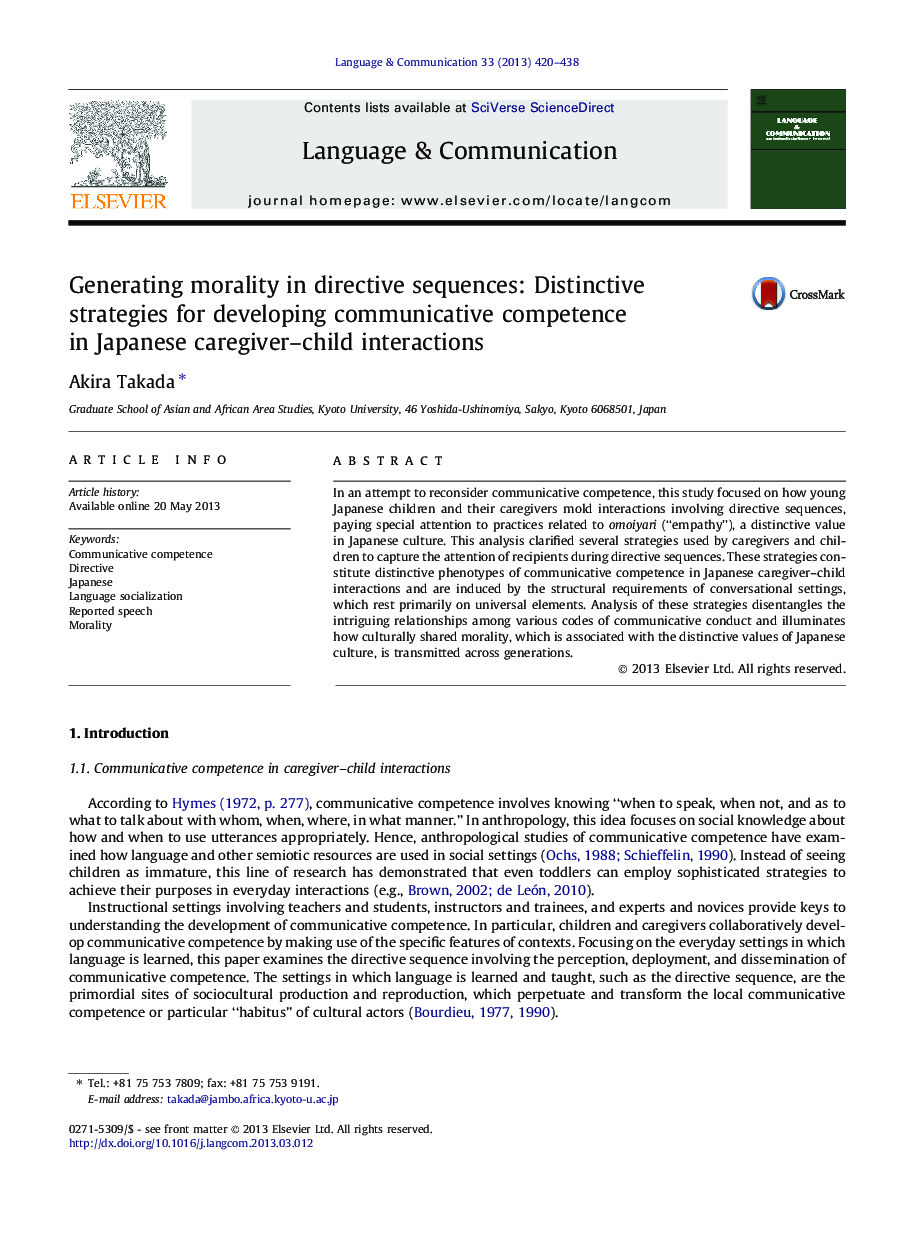| کد مقاله | کد نشریه | سال انتشار | مقاله انگلیسی | نسخه تمام متن |
|---|---|---|---|---|
| 934926 | 923722 | 2013 | 19 صفحه PDF | دانلود رایگان |

• Caregiver often modulates the intensity of directives to regulate child’s behavior.
• The caregiver also effectively uses reported speech when issuing modified directives.
• Reacting to directives the child often attempts to change the frame of conversation.
• While pursuing this, the child often cites involvement in a pro-moral activity.
• These strategies were induced by the structural requirements of conversation.
In an attempt to reconsider communicative competence, this study focused on how young Japanese children and their caregivers mold interactions involving directive sequences, paying special attention to practices related to omoiyari (“empathy”), a distinctive value in Japanese culture. This analysis clarified several strategies used by caregivers and children to capture the attention of recipients during directive sequences. These strategies constitute distinctive phenotypes of communicative competence in Japanese caregiver–child interactions and are induced by the structural requirements of conversational settings, which rest primarily on universal elements. Analysis of these strategies disentangles the intriguing relationships among various codes of communicative conduct and illuminates how culturally shared morality, which is associated with the distinctive values of Japanese culture, is transmitted across generations.
Journal: Language & Communication - Volume 33, Issue 4, Part A, October 2013, Pages 420–438